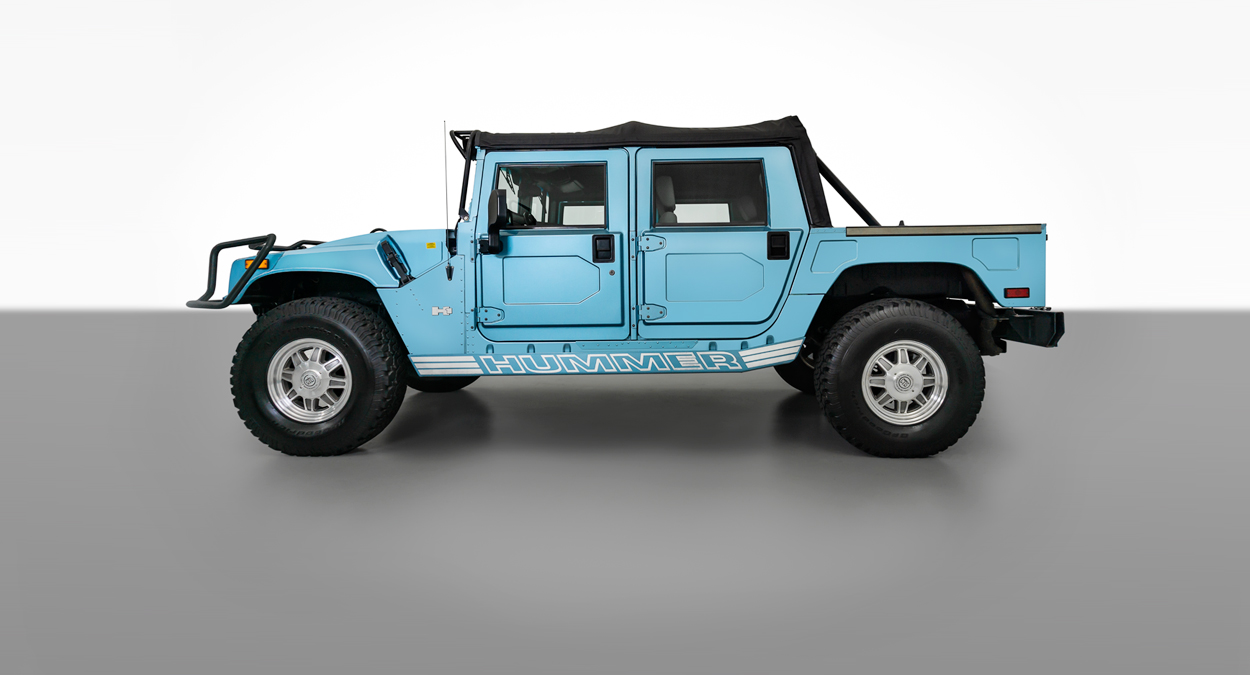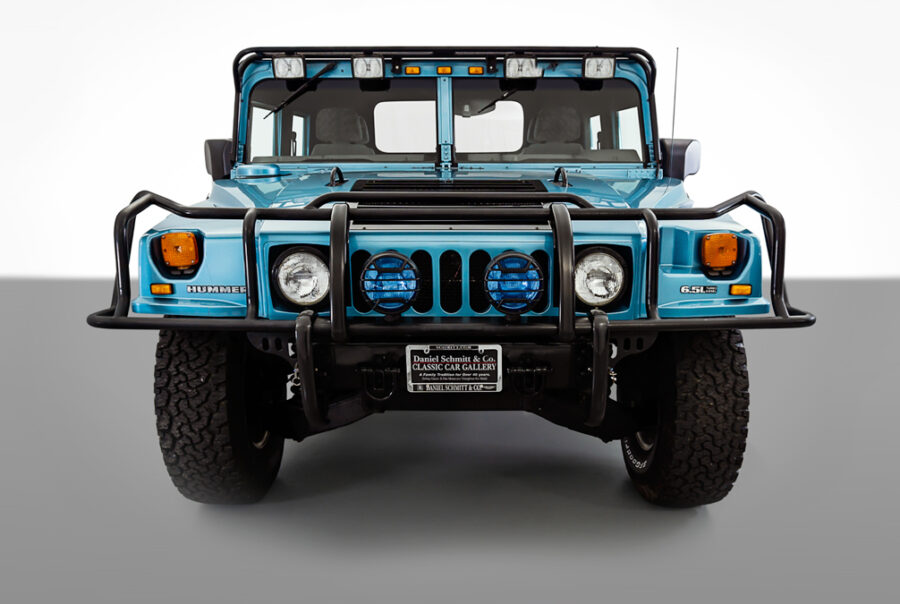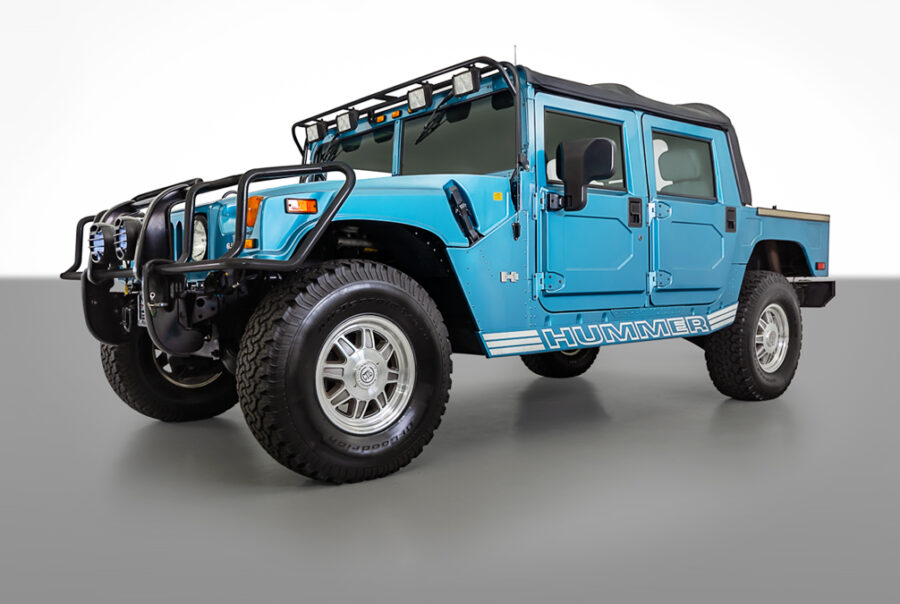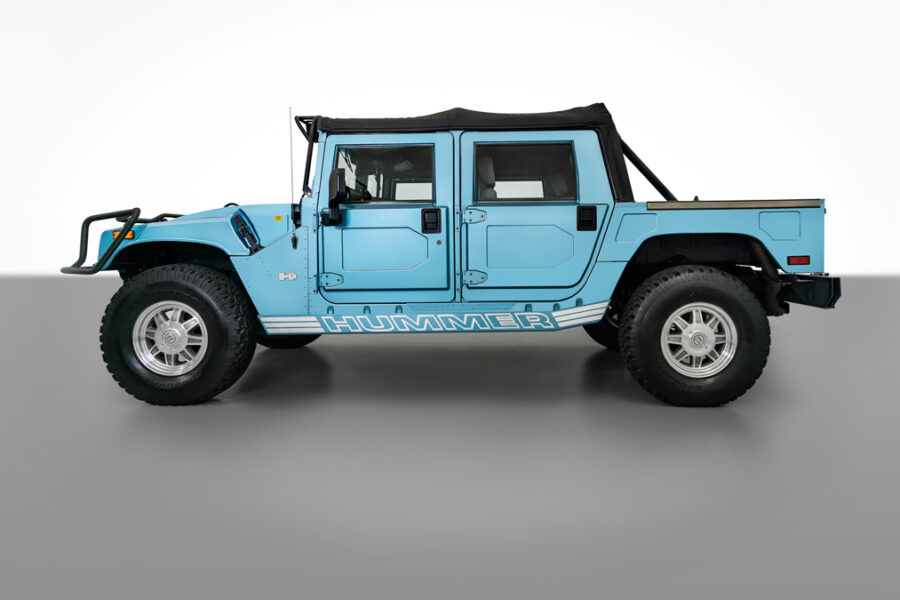

2002 Hummer H1
Click any photo to view fullscreen. Mobile users can pinch to zoom. Tap ‘X’ to close.
SPEED
SPECIFICATIONS
- Mileage 35906
- 6.5L V8 Turbo Diesel the model with 6466 cm3 / 395.6 cui engine
- 4-door off-road soft-top body and V-8 size, 145 kW / 197 PS / 195 hp
- 4-speed turbo-hydramatic automatic powertrain
- Inboard brakes
- Run Flat Tires with pneumatic adjustability
2002 Hummer H1
In a rare case of military-commissioned hardware becoming available to the public, the civilian Hummer started selling in small numbers in 1992. While some packaging elements were softened for real-world use, the hardware that made the Hummer special remained intact. This is historically fitting coming from AM General, a company whose roots stretch back to Willys-Overland and the production of the original “Jeep” during WWII.
The Hummer H1 is a four-wheel-drive utility vehicle based on the M998 Humvee, which was created by AM General. The vehicle was produced from 1992 through 2006, and was the first of what became the Hummer line. Originally designed strictly for military use, the off-road vehicle was released to the civilian market due to market demand. It was initially known as the “Hummer”; however, under a 1999 deal, GM bought marketing rights to the Hummer name and called the vehicle the Hummer H1.
AM General continued to build the H1 and Humvee in its Mishawaka, Indiana facility. 704 H1’s were produced in 2002.
Originally released in the civilian market March 14, 1992, the Hummer H1 became known from photographs published during Operation Desert Storm and the enthusiastic campaign from actor/politician Arnold Schwarzenegger.
The Hummer H1 shares some common driveline parts with the HMMWV. These include brakes, axles, frame and major body panels (hood, tailgate and quarter panels) are shared between the HMMWV and Hummer H1. All H1s and HMMWVs were produced on the same assembly line; of which civilian H1s were then painted and finished in a separate building opposite the parking lot.
The H1 models are inherently stable due to their wide track. They can ford 30 inches (76 cm) of water and climb a 22-inch (56 cm) step. Their stock ground clearance of 16 inches (41 cm) is made possible by tucking driveline components inside a channel in the central space between the left and right seats. They have high approach/departure angles of 72/37.5 degrees. Most H1s are equipped with a Central Tire Inflation System (CTIS), which enables the driver to increase or decrease the tire air pressure at the push of a button, since lower tire pressures are more suited for off-road, and higher tire pressures are desirable on-road.
Hummer H1s have other unusual features, such as inboard brakes and portal gears that allow the drivetrain’s half shafts a higher placement, for greater ground clearance. The radiator is up high, sloping over the engine on a forward-hinged hood. The air intake is high-mount, enabling the H1 to ford waist-level water. Rather than using simple run flat, magnesium-aluminum alloy or rubber inserts are an optional feature for run flat ability. Options included leather seats, a winch kit, and running boards.
The 4L80-E (and similar 4L85-E) was a series of heavy-duty automatic transmissions from General Motors designed for longitudinal engine configurations. The 4L80-E was heavily based on the Turbo-Hydramatic 400 first produced in October 1963, adding electronic controls and an overdriven fourth gear. 4L80-Es were optioned only in Chevrolet/GMC pickups, Suburban 2500s, vans, and commercial vehicles, and the Hummer H1. It was also adopted by Rolls-Royce in 1991 and modified after extensive testing, and used initially in the Bentley Continental R, and subsequently other Rolls-Royce and Bentley vehicles.
The original 6.2 L (379 cu in) diesel V8 was introduced in 1982 for the Chevrolet C/K and was produced until 1993. The 6.2 L diesel emerged as a high-MPG alternative to the V8 gasoline engine lineup, and achieved better mileage than the General Motors 4.3 L V6 gasoline engines of the 1980s, at a time when the market was focused on power rather than efficiency. However, it was designed to easily install in place of the gasoline V8, using the same mounting and attachments for transmissions as all GM truck engines. Overall weight for the complete engine is slightly heavier than the 7.4 L gasoline engine. There were approx. 300 6.2 diesel engines which were placed into 2 door cars in 1981, prior to official production. These were then given to the United States government and issued to various federal agencies and military branches. These were used as testbeds regarding long term fuel economy and reliability in cars.





